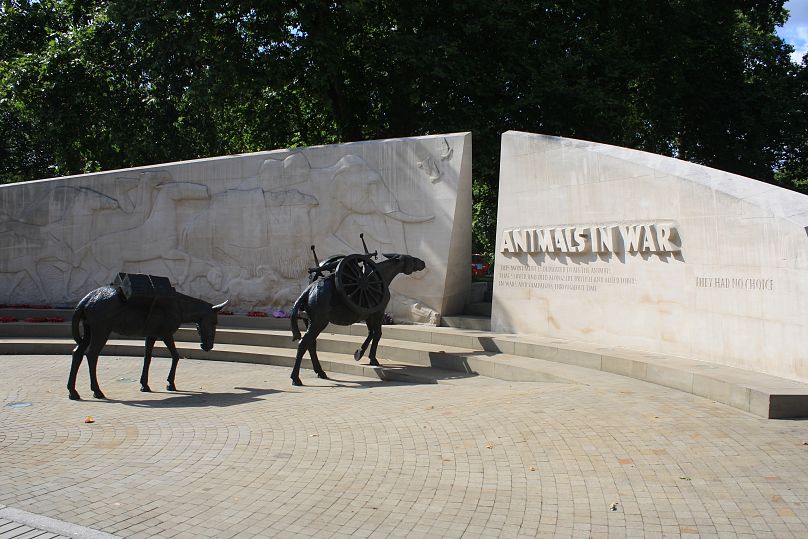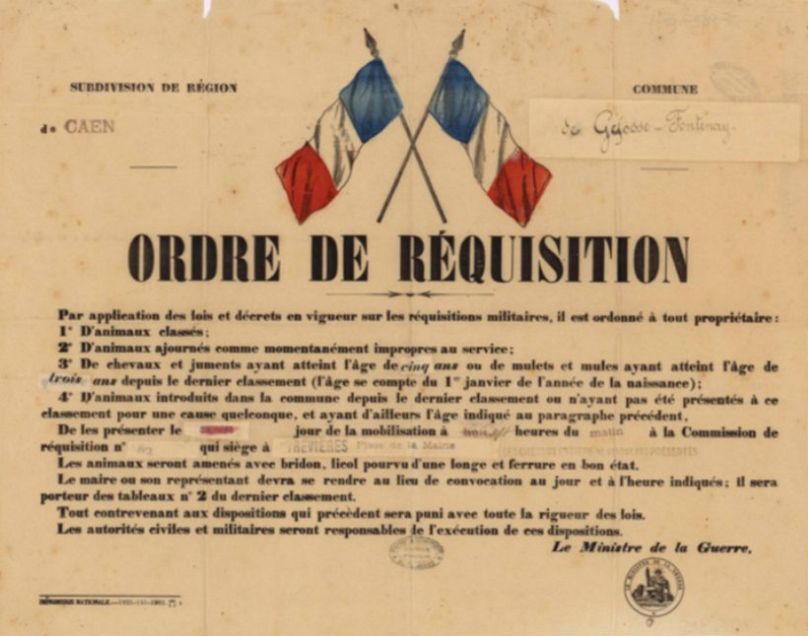More than 11 million animals served during the Great War.
Paris is to honour the hundreds of thousands of animals who perished protecting the French nation during the Great War with the creation of a commemorative monument.
A working group has been tasked with elaborating plans for a monument to pay tribute to the sacrifice made by war animals during World War I.
It comes after animal welfare association, Paris Animaux Zoopolis, lobbied the French capital for several months ahead of the centenary of the World War I armistice on November 11.
The group deplored that no such monument exists in the French capital despite such steles being erected in other world capitals, including London, Brussels, Ottawa and Canberra.
1.1 million horses died
Over 11 horses, donkeys and mules served in the Great War. Other animals to have been deployed by the different armies include pigeons and dogs. Cats were also used, particularly in trenches, to hunt vermin critical to the spread of diseases.
That's because at the beginning of the 20th century, machines had only just started to be deployed on the battlefield. The French army for instance had fewer than 200 vehicles at the start of the war but counted nearly 200,000 horses within its ranks. These were mostly used in the cavalry or for transport.
When war broke, French authorities issued requisition notices for horses and mules. Within weeks, over half a million horses had been deployed. Overall, nearly one million equids were requisitioned by the French army and up to half a million more would later be imported including around 150,000 from the United States.
The bond soldiers made with their four-legged battle companions was immortalised in various diaries and novels written by those who had been on the front, including Maurice Genevoix — whose remains will be buried in the Pantheon next year, President Emmanuel Macron announced on Tuesday.
In "Neath Verdun", Genevoix describes the suffering of a dying horse which, he writes "stir every man among us as if we were looking upon human agony."
Nearly 1.4 million French soldiers made the ultimate sacrifice during the four-year war. Some 1,1 million French horses also perished and more than 100,000 animals were issued a citation by their regiments or were decorated.
Months of lobbying
Paris Animaux Zoopolis, and 30 other animal welfare associations, first wrote to the Paris mayor, Anne Hidalgo, in May 2018, to demand a monument be made to commemorate animal sacrifice during the Great War. Their demand was rejected by Hidalgo who argued this was a matter for the state.
Undeterred, the association continued to lobby for the stele and gathered the support of the powerful veteran association "Le Souvenir Francais."
"In addition, we did a lot of research to find links between Paris and war animals" including photographs from the time, the association told Euronews by email. These were then presented to some of the Parisian districts' town halls.
"Following the fruit of our research, our solicitations and meetings, the (town halls of the) 14th, 6th, 7th, 8th and 2nd districts tabled resolutions" to install commemorative plaques in specific areas of the capital.
They also approached members of the Conseil de Paris — the French capital's governing body — who pushed for a vote. The motion was approved on September 26 and a working group was tasked to study where and what form the commemorative monument should be.
On Monday, two of the districts also voted to honour war animals within their boundaries.
Paris Animaux Zoopolis welcomed the various votes and has called to be included in the working group.
"We are at the origin (of the project), it would be legitimate for us to be included," they wrote on Tuesday.













